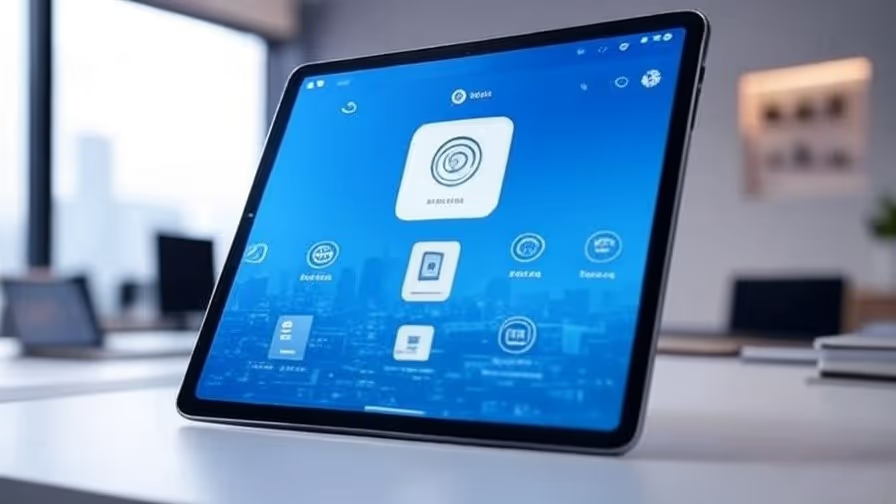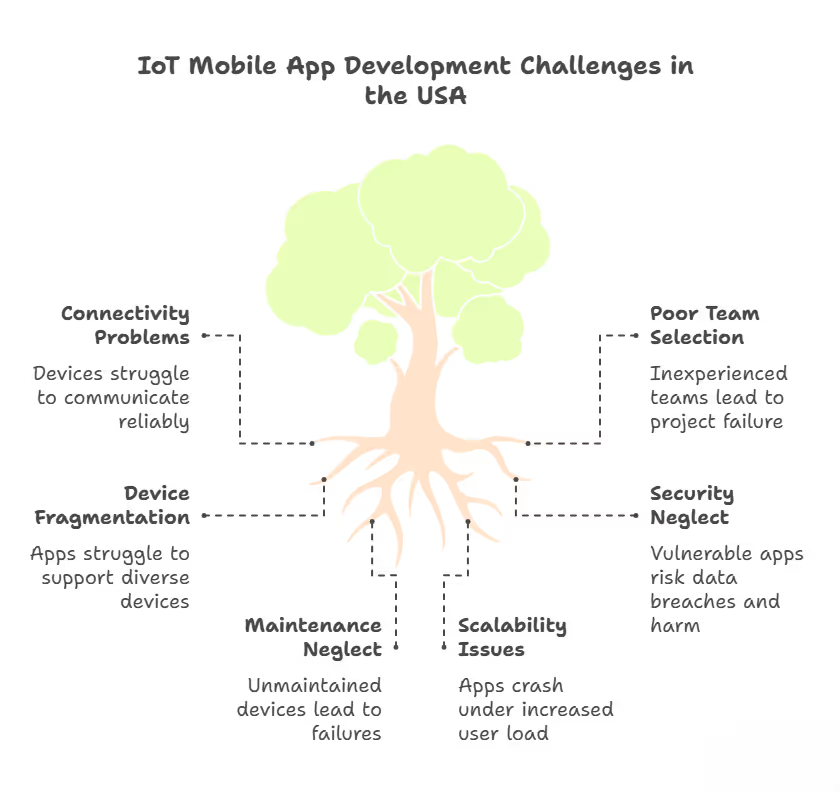Custom Software Development for IOT

Custom software development for IoT involves creating tailored applications and platforms that connect, manage, and analyze data from IoT devices. It enables businesses to collect real-time data, automate processes, and integrate smart devices into their operations, enhancing efficiency, decision-making, and scalability.
Why do IOT Devices have so many Connectivity Problems
You’ve probably got a smart device at home that drives you nuts because it keeps going offline. It’s a common problem, and it’s not just you. The issue comes down to how devices talk to each other and the apps controlling them.
Here’s what’s going on and how to fix it:
- Poor planning hurts: Developers often rush and don’t test how devices work on different networks like Wi-Fi, 5G, or Bluetooth. For example, SunGlow Tech in Miami had a smart sprinkler that kept failing because it wasn’t tested on weak Wi-Fi signals.
- Too many apps confuse users: Imagine needing one app for your smart bulb and another for your smart lock. A unified app that controls multiple devices makes life easier for users.
- Protocols are tricky: Devices use different languages like MQTT or CoAP to communicate. If your app doesn’t support them all, you’ll have connection issues.
- Testing is key: A good developer tests your app in real-world scenarios, think rural areas with spotty internet or busy urban networks.
Work with a team that plans for these issues from the start. They should build apps that handle multiple protocols and test them thoroughly to keep your devices online and your users happy.
A 2023 Rinsights study found 64% of IoT devices struggle with connectivity, and users face 1.5 performance issues daily.

How Do You Pick a Great IoT Development Team in the USA?
Choosing the right development partner is like picking a teammate for a big game, you need someone you can trust. A bad pick can sink your project. I worked with RiverPeak Solutions in Denver, and they learned the hard way when their first developer didn’t understand their need for a smart farming app that worked with old equipment.
Here’s how to find a winner:
- Look for IoT experience: Check their portfolio for projects like yours, maybe a smart home app or a healthcare wearable. They should know IoT tech like the back of their hand.
- Understand your business: A good partner gets your goals, whether it’s launching an MVP for a startup or meeting strict compliance for a big company like a hospital in New York.
- Ask for proof: Look at case studies or client reviews. Did they help a company like yours succeed? For example, a good firm might have built an app that cut downtime for a retail chain.
- Communication matters: They should feel like part of your team, explaining tech in simple terms and keeping you in the loop.
- U.S. focus helps: A U.S.-based team understands local needs, like complying with laws or working with American cloud providers like AWS.
A great partner saves you time and money by getting it right the first time. ByteSnap’s 2023 report says only 26% of IoT projects reach the market, with 60% failing during development.
Device fragmentation solutions for IOT Applications
Ever tried using one app to control a bunch of different smart devices? It’s a mess when they don’t play nice together. This is called device fragmentation, and it’s a big problem. I helped SkyBloom Tech in San Francisco fix their smart home hub, which kept crashing on older devices.
Here’s how to tackle it:
- Build flexible apps: Your app should work with different protocols like MQTT, CoAP, or HTTP, so it can talk to any device, from a new smart lock to an old sensor.
- Plan for variety: Devices have different hardware, like cheap chips or fancy processors. Your app needs to handle them all without crashing.
- Test across devices: A good developer tests on a range of devices, old and new, to catch issues early.
- Modular design saves time: A smart architecture lets you add support for new devices without rebuilding everything.
Here’s a quick comparison of approaches to handle fragmentation:
A solid app design keeps your product flexible and your users happy. IoT For All’s 2024 analysis notes fragmentation causes 30% of user complaints about IoT apps.
Making Security a Top Priority for IoT Apps
Security is a big deal for IoT, nobody wants their smart device hacked. HealthWave Innovations in Orlando, and their wearable app almost launched with weak security, risking users’ health data.
Here’s why security matters and how to get it right:
- Protect sensitive data: IoT devices collect personal info, like your home’s temperature or medical stats. Strong encryption, like AES-256, keeps it safe.
- Use secure logins: Multi-factor authentication (like a password plus a phone code) stops hackers from sneaking in.
- Set strict permissions: Users should control what data their app shares. For example, a smart camera shouldn’t send video to the cloud without permission.
- Keep updating: Regular security audits and patches stop new threats, like a hacker exploiting a software glitch.
- Follow U.S. laws: Rules like CCPA in California require protecting user data, and a good developer ensures compliance.
A secure app builds trust and keeps your brand safe. A 2023 Rinsights survey found 72% of U.S. consumers worry IoT app glitches could expose data or cause harm.
Keeping IoT Maintenance Costs Under Control
Maintenance can be a budget killer if you’re not ready. I saw this with UrbanFlow Tech in Austin, whose smart energy monitors stopped working without updates, upsetting customers.
Here’s how to plan for the long haul:
- Expect ongoing costs: You’ll need to update devices for security, compatibility, and new features. Plan for this early to avoid surprises.
- Use OTA updates: Over-the-air updates let you fix bugs or add features without touching the device, saving time and money.
- Manage devices smartly: Tools like device provisioning and key rotation keep your devices secure and working with new systems.
- Get a maintenance contract: A good developer offers long-term support, handling updates and customer issues so you don’t have to.
Smart planning keeps your product running and your users happy. ByteSnap’s 2024 report estimates maintenance accounts for 70% of an IoT project’s cost over 10-20 years.
Scaling Your IoT App Without Breaking It
Your app might work great with 1,000 users, but what happens at 100,000? CropSmart Solutions in Iowa scale their farming app, which crashed when too many sensors sent data at once.
Here’s how to build for growth:
- Use cloud power: Platforms like AWS IoT Core handle huge amounts of data, keeping your app fast as it grows.
- Try edge computing: Processing data on the device itself cuts delays, especially for real-time apps like smart thermostats.
- Design for scale: Your app should handle more users and devices without slowing down or needing a rewrite.
- Test under pressure: Simulate heavy usage to catch weak spots before they become problems.
Here’s a quick look at scaling options:
A scalable app keeps your product competitive as your business grows. IoT For All’s 2024 study says scalability issues cause 25% of IoT app failures.
What Makes Professional IoT Development Stand Out?
IoT development isn’t just coding an app, it’s about blending hardware, software, and real-time data. I’ve built solutions for startups like NovaSpark in Los Angeles and big players like CoreTech Industries in Boston.
The best partners have:
- Deep IoT know-how: They understand hardware-software integration, like making a sensor talk to an app.
- Proven results: Look for case studies, like an app that cut factory downtime by 30%.
- End-to-end support: From building your MVP to handling updates years later, they’ve got you covered.
- U.S. market savvy: They know local needs, like working with American cloud services or meeting industry standards.
A pro team turns your idea into a product that lasts.
Wrapping It Up
Building an IoT product in the U.S. can feel like climbing a mountain, but with the right partner, it’s totally doable. From fixing connectivity and fragmentation to locking down security and planning for maintenance, a pro team makes all the difference.
I’ve seen companies like SunGlow and CropSmart turn their ideas into reality by choosing developers who know IoT and the U.S. market inside out.
Ready to launch your game-changing product?
Find a partner with the experience to make it shine.

